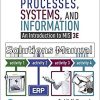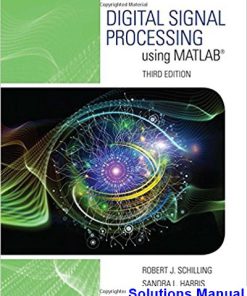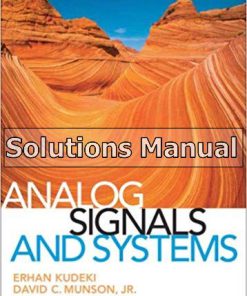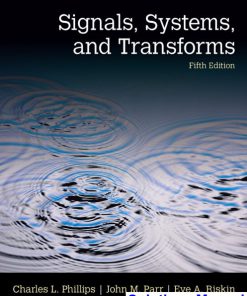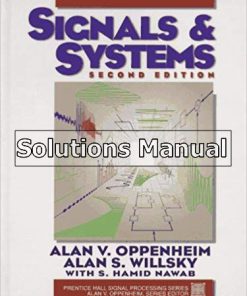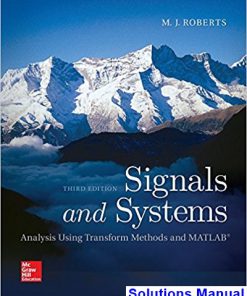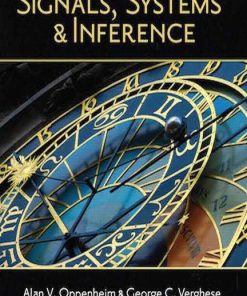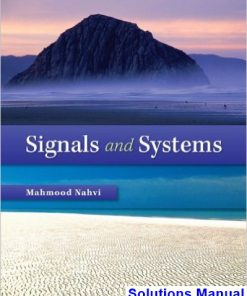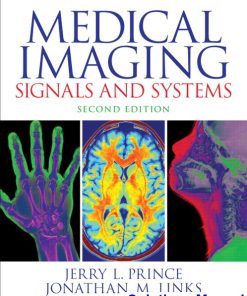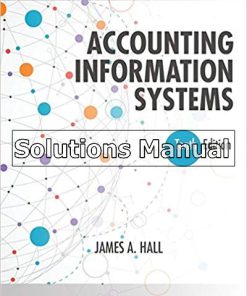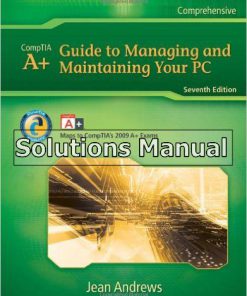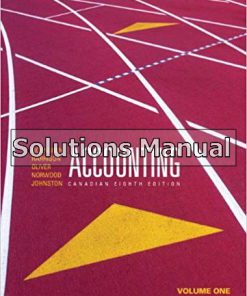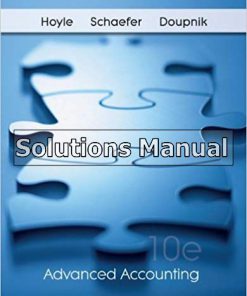Signals and Systems using MATLAB 2nd Edition Chaparro Solutions Manual
$50.00 Original price was: $50.00.$26.50Current price is: $26.50.
Signals and Systems using MATLAB 2nd Edition Chaparro Solutions Manual.
This is completed downloadable of Signals and Systems using MATLAB 2nd Edition Chaparro Solutions Manual
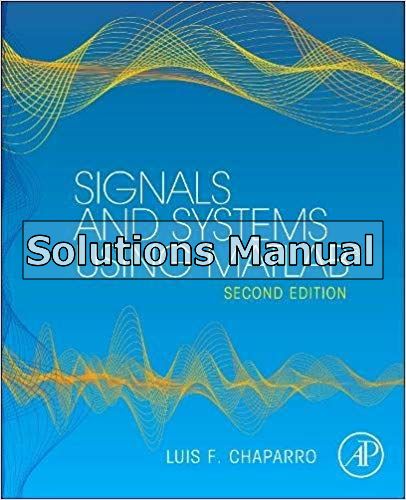
Product Details:
- ISBN-10 : 0123948126
- ISBN-13 : 978-0123948120
- Author: Chaparro’s
This new textbook in signals and systems provides a pedagogically rich approach to what can commonly be a mathematically dry subject. With features like historical notes, highlighted common mistakes, and applications in controls, communications, and signal processing, Chaparro helps students appreciate the usefulness of the techniques described in the book. Each chapter contains a section with MatLab applications.
- Pedagogically rich introduction to signals and systems using historical notes, pointing out “common mistakes”, and relating concepts to realistic examples throughout to motivate learning the material
- Introduces both continuous and discrete systems early, then studies each (separately) in more depth later
- Extensive set of worked examples and homework assignments, with applications to controls, communications, and signal processing throughout
- Provides review of all the background math necessary to study the subject
- MatLab applications in every chapter
Table of Content:
- 1: Introduction
- 0: From the Ground Up!
- 0.1 Introduction
- 0.2 Examples of Signal Processing Applications
- 0.3 Continuous or Discrete?
- 0.4 Complex or Real?
- 0.5 Soft Introduction to MATLAB
- 0.6 Problems
- 2: Theory and Application of Continuous-Time Signals and Systems
- 1: Continuous-time Signals
- 1.1 Introduction
- 1.2 Classification of Time-Dependent Signals
- 1.3 Continuous-Time Signals
- 1.4 Representation of Continuous-Time Signals Using Basic Signals
- 1.5 Special Signals—the Sampling and the Sinc Signals
- 1.6 Basic Signal Operations—Time Scaling, Frequency Shifting, and Windowing
- 1.7 What Have We Accomplished? Where Do We Go from Here?
- 1.8 Problems
- 2: Continuous-time Systems
- 2.1 Introduction
- 2.2 System Concept and Classification
- 2.3 Linear Time-invariant (LTI) Continuous-time Systems
- 2.4 Causality
- 2.5 Bounded-input Bounded-output (BIBO) Stability
- 2.6 What Have We Accomplished? Where Do We Go From Here?
- 2.7 Problems
- 3: The Laplace Transform
- 3.1 Introduction
- 3.2 The Two-sided Laplace Transform
- 3.3 The One-sided Laplace Transform
- 3.4 Properties of the One-sided Laplace Transform
- 3.5 Inverse Laplace Transform
- 3.6 Analysis of LTI Systems
- 3.7 What Have We Accomplished? Where Do We Go from Here?
- 3.8 Problems
- 4: Frequency Analysis: The Fourier Series
- 4.1 Introduction
- 4.2 Eigenfunctions Revisited
- 4.3 Complex Exponential Fourier Series
- 4.4 Response of LTI Systems to Periodic Signals
- 4.5 Operations using Fourier Series
- 4.6 What have We Accomplished? Where Do We Go from here?
- 4.7 Problems
- 5: Frequency Analysis: The Fourier Transform
- 5.1 Introduction
- 5.2 From the Fourier Series to the Fourier Transform
- 5.3 Existence of the Fourier Transform
- 5.4 Fourier Transforms from the Laplace Transform
- 5.5 Linearity, Inverse Proportionality, and Duality
- 5.6 Spectral Representation
- 5.7 Convolution and Filtering
- 5.8 Additional Properties
- 5.9 What Have we Accomplished? What is Next?
- 5.10 Problems
- 6: Application of Laplace Analysis to Control
- 6.1 Introduction
- 6.2 System Connections and Block Diagrams
- 6.3 Application to Classical Control
- 6.4 State-variable Representation of LTI Systems
- 6.5 What Have we Accomplished? What is Next?
- 6.6 Problems
- 7: Fourier Analysis in Communications and Filtering
- 7.1 Introduction
- 7.2 Application to Communications
- 7.3 Analog Filtering
- 7.4 What have We Accomplished? What is Next?
- 7.5 Problems
- 3: Theory and Application of Discrete-Time Signals and Systems
- 8: Sampling Theory
- 8.1 Introduction
- 8.2 Uniform Sampling
- 8.3 Practical Aspects of Sampling
- 8.4 Application to Digital Communications
- 8.5 What Have We Accomplished? Where Do We Go from Here?
- 8.6 Problems
- 9: Discrete-time Signals and Systems
- 9.1 Introduction
- 9.2 Discrete-Time Signals
- 9.3 Discrete-Time Systems
- 9.4 What Have We Accomplished? Where Do We Go From Here?
- 9.5 Problems
- 10: The Z-transform
- 10.1 Introduction
- 10.2 Laplace Transform of Sampled Signals
- 10.3 Two-sided Z-transform
- 10.4 One-sided Z-transform
- 10.5 One-sided Z-transform Inverse
- 10.6 State-Variable Representation
- 10.7 What have we accomplished? Where do we go from here?
- 10.8 Problems
- 11: Fourier Analysis of Discrete-time Signals and Systems
- 11.1 Introduction
- 11.2 The Discrete-Time Fourier Transform (DTFT)
- 11.3 Fourier Series of Discrete-Time Periodic Signals
- 11.4 The Discrete Fourier Transform (DFT)
- 11.5 What have we accomplished? Where do we go from here?
- 11.6 Problems
- 12: Introduction to the Design of Discrete Filters
- 12.1 Introduction
- 12.2 Frequency Selective Discrete Filters
- 12.3 Filter Specifications
- 12.4 IIR Filter Design
- 12.5 FIR Filter Design
- 12.6 Realization of Discrete Filters
- 12.7 What Have We Accomplished? Where Do We Go From Here?
- 12.8 Problems
- Appendix: Useful Formulas
- Bibliography
- Index
People Also Search:
signals and systems using matlab chaparro
signals and systems using matlab 2nd edition chaparro
signals and systems using matlab 2nd edition download scribd
signals and systems using matlab
signals and systems using matlab 2nd edition
signals and systems using matlab 2nd edition solution manual download pdf
Instant download after Payment is complete
You may also like…
Solutions Manual
Analog Signals and Systems 1st Edition Kudeki Solutions Manual
Solutions Manual
Engineering
Signals and Systems Analysis Using Transform Methods and MATLAB 3rd Edition Roberts Solutions Manual
Information Technology
Signals and Systems 1st Edition Mahmood Nahvi Solutions Manual
Related products
Solutions Manual
A+ Guide to IT Technical Support Hardware and Software 9th Edition Andrews Solutions Manual
Solutions Manual
Accounting Information Systems 10th Edition Hall Solutions Manual
Solutions Manual
Accounting Volume 1 Canadian 8th Edition Horngren Solutions Manual
Solutions Manual
Solutions Manual
Accounting Information Systems 2nd Edition Hurt Solutions Manual


